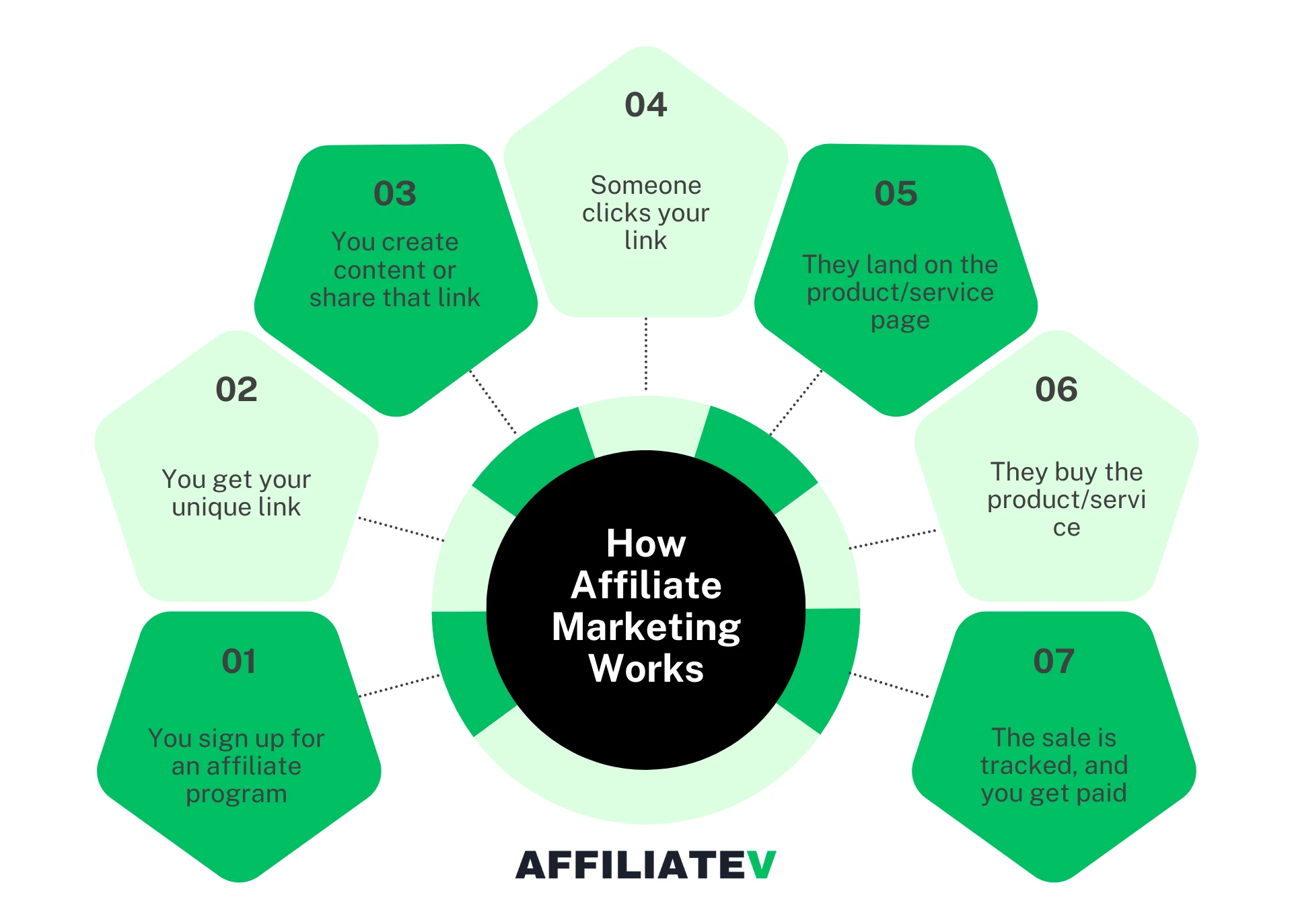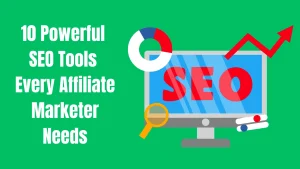Affiliate Marketing vs Influencer Marketing: Which One Actually Pays Off in 2025?
Affiliate Marketing vs Influencer Marketing. Find out which one pays more in 2025, even if you are starting with zero audience.

Affiliate marketing and influencer marketing are not two sides of the same coin. They look similar on the surface. You share content, promote brands, and earn money when people take action. But the way each model works, the kind of trust you need, and the results you get are very different.
One gives you long-term income with systems you control. The other leans on personality, reach, and fast engagement.
In 2025, the lines between the two are getting even more blurred. More influencers are using affiliate links. More affiliates are building personal brands. But if you are choosing one path or trying to figure out what pays better, you need to understand how both work today, not last year.
I’ve worked with both. I’ve tested what converts and what wastes time. This is what I’ve learned. And if you want to grow smarter, not just louder, you’ll want to keep reading.
Key Takeaways
- Affiliate marketing pays for performance: You earn when someone buys through your link. No audience size required. Just useful content that gets clicks and converts.
- Influencer marketing pays for visibility: You get paid upfront to promote a product to your followers. Brands care more about reach and engagement than actual sales.
- Affiliate income grows over time: Once your content is live, it can keep earning without extra work. It’s slower at first but more stable in the long run.
- Influencer income is faster but less stable: One post can pay well, but you have to keep showing up. No post, no paycheck. Plus, platforms can kill your reach overnight.
- Combining both is smart: You can promote affiliate links and take on brand deals. Just focus on value first, and let both income streams work together.
What Is Affiliate Marketing
Affiliate marketing is when you promote someone else’s product and earn a commission if someone buys through your link. That’s it. No inventory, no shipping, no customer support. You’re just the connector between the buyer and the brand.
You sign up for an affiliate program, get a unique link, and share it in your content. If someone clicks and makes a purchase, you get paid. That could be a blog post, a YouTube video, or even a simple email. The brand handles everything else.

For example, you’ve probably seen bloggers reviewing products and linking to Amazon. Or YouTubers saying, “Check the link in the description.” That’s affiliate marketing. Some email marketers even build full campaigns around it.
Another example,
You write a blog post about the best budget laptops for students. In the post, you include affiliate links to products on Amazon. Someone reads your post, clicks a link, and buys a laptop. You earn a commission. No need to be famous. You just need content that ranks and converts.
Done right and done consistently, affiliate marketing can earn hundreds to thousands per month. I’ve seen creators pull in five figures just from one solid funnel or niche site. But it takes real effort and smart content, not guesswork.
Recommended Reading: How To Start Affiliate Marketing in 2025: A Comprehensive Step-by-Step Tutorial Guide for Beginners
What Is Influencer Marketing?
Influencer marketing is when a brand pays someone with an audience to talk about their product. That’s it. It’s not about selling directly, but about attention, reach, and trust. The more people watch, like, and comment on your content, the more valuable you are to brands.

Influencers make money through brand deals and sponsorships. A company might pay you to wear their clothes, use their skincare, or just mention them in a story or video. You’re not earning per sale, but you get paid upfront for exposure.
For example:
A fitness creator on Instagram with around 80,000 followers might charge between $500 to $1,000 for a single sponsored post on their feed. That’s just one image or video mentioning the product.
But if the brand wants more, like a story set with swipe-up links, or a reel that stays on the profile, that fee can easily jump to $2,000 or more. Why? Because stories and reels boost visibility and engagement, which means more eyes on the brand.
Some influencers even offer package deals that bundle feed posts, reels, and stories into one campaign.
Most of this happens on Instagram, TikTok, and YouTube Shorts. Brands look at your follower count, but they care more about how people interact with your content. Ten thousand engaged followers can be more powerful than a hundred thousand who scroll past.
Affiliate Marketing vs Influencer Marketing: The Main Differences
Both affiliate and influencer marketing can earn you money, but they play by different rules. Here’s how they stack up:
| Factor | Affiliate Marketing | Influencer Marketing |
|---|---|---|
| Income Potential | Grows over time. No real cap if your content ranks or converts well. | Can spike fast, but depends on deals and follower count. |
| Upfront Effort | High at first. You need content, trust, and traffic. | Medium. Build a following, then pitch or wait for brands. |
| Skillset Required | SEO, writing, funnels, copywriting, link strategy. | Content creation, storytelling, presence, and engagement. |
| Long Term Stability | Strong if built on evergreen content or email list. | Risky. One algorithm shift can tank reach. |
| Platform Dependency | You own the content (if on your site or email). | Fully tied to social platforms and their rules. |
| Passive Earning | Very possible. Old content can still pay you years later. | Harder. You earn only when posting or promoting deals. |
Both models have upside. But the long game? Affiliate marketing usually wins on consistency and control.
Affiliate Marketing in 2025: What’s Changed
Affiliate marketing isn’t just blogs and banner ads anymore. It’s faster, leaner, and way more creator-friendly than it used to be.
- More Brands Are Getting Involved: From software to skincare, even small brands now have affiliate programs. That means more chances to promote products that actually fit your voice and audience.
- Micro Content Is Driving Clicks: Short videos and posts with clear calls to action are converting better than long reviews. Think 30-second TikToks, Instagram carousels, or even a 2-line post on Threads with a link.
- People Trust Niche Recommendations More: Generic influencers are fading. What’s working now? Real creators in specific niches who share honest product takes. Readers and followers can smell scripted promos from a mile away.
- New Tools Make Starting Easier: Platforms like ThirstyAffiliates for link management, GetResponse for email funnels, and Lasso for link visuals are helping beginners look pro from day one, without needing a tech background.
Affiliate marketing is getting smarter. If you’ve got something real to say, and you’re consistent, 2025 is wide open.
Influencer Marketing in 2025: What’s New
Influencer marketing is still big. But it’s shifting fast, and not always in favor of the creator.
- Brands Are Calling More Shots: Brands now want full control; what you say, how you say it, and when it goes live. Some even ask for usage rights to repurpose your content in their ads. That leaves less room for your tone or creativity.
- Smaller Creators Are in Demand: Big names still get deals, but brands are chasing micro (10K–50K) and nano (under 10K) influencers now. Why? Better engagement, lower cost, and tighter niche appeal. One TikTok creator with 12K followers can close a deal a 200K influencer might miss because the comments actually show trust.
- Your Post Disappears Fast: One sponsored post might live for a day. A story? Maybe six hours. Then it’s buried, unless you promote it again. Most influencer content isn’t built to last. You have to keep creating just to stay visible.
- You’re at the Mercy of Algorithms: One change on TikTok or Instagram, and your reach tanks. You don’t own the audience. If the app hides your post, you’re stuck. That’s a big risk for anyone depending on sponsorships alone.
In 2025, being an influencer still works, but it’s more like renting space. And the landlord is unpredictable.
Which One Pays Off More in 2025?

Both can make money. But they don’t pay off the same way.
If you want fast cash and have an engaged following, influencer marketing gives a quick shot. A TikTok creator with 50K followers can earn $300 to $800 per brand deal. Add a reel or story pack, and that could hit $1,200. But it’s active work. No post, no paycheck.
Affiliate marketing works slower at first but builds over time. Say you run a blog reviewing fitness gear. You rank a few product pages on Google. Those links can bring in $50 to $200 a day, on autopilot. No brand chasing. No negotiating DMs. Just content doing the work.
Short term, influencers win on speed. Long term, affiliate marketers win on scale and stability.
Creators with traffic channels (blog, email list, YouTube) benefit most from affiliate. Those with a loyal, growing social audience can crush it with sponsorships.
You can even mix both, but chasing quick hits without a system won’t last.
Can You Combine Both?

Absolutely YES. And to be honest, that’s where a lot of smart creators are heading now.
Affiliate marketers are no longer hiding behind blog posts and faceless websites. Many are stepping into the spotlight: on YouTube, Instagram, and even TikTok. They build a personal brand, show their face, and talk directly to their audience.
That naturally pulls them into influencer territory. You might start as someone sharing honest product reviews, but over time, you gain trust and a following. Brands start reaching out. You’re now both.
On the flip side, influencers who rely on brand deals alone are leaving money on the table. It’s unpredictable. No campaign? No income. But if you drop affiliate links in your bio, under a YouTube video, or even in a blog post, those links keep working long after you’ve hit “publish.”
Let’s say you recommend your favorite skincare product in a reel. A pinned comment or link in the caption turns that into passive income. No need to wait for another brand deal to land.
Combining both strategies is easier than most think. Talk about products you actually use. Add affiliate links to your content. Create a simple website to house your reviews or lists.
Let your social content drive traffic there. Over time, those pieces feed each other. You stay visible, you earn in multiple ways, and you’re not stuck depending on one platform or paycheck.
That’s how real creators are building stable income in 2025, by not choosing one or the other but by blending both in a way that feels natural to them.
Conclusion
Both affiliate marketing and influencer marketing work. That’s the truth. But which one pays off more? It really depends on you. Your skills, your comfort level, and how you like to create.
If you’re good at content that ranks or converts, affiliate marketing gives you control, passive income, and long-term potential. If you thrive on camera, love engaging with an audience, and don’t mind showing up often, influencer marketing could be your thing.
You don’t have to guess. Try one. Or blend both. Just don’t sit and wait.
Ready to move?
→ [Check out my affiliate tools list]
→ [Start here if you’re new to affiliate marketing]
→ [Join our private group of creators making this work daily]
Whatever path you choose, make it yours and build it with purpose.
Frequently Asked Questions
What’s the difference between affiliate marketing and influencer marketing?
Affiliate marketing is about promoting products using your own content and earning a commission when someone buys through your link. You don’t need to show your face. Influencer marketing focuses more on brand deals and sponsorships. You get paid to talk about a product, usually on video or social platforms. Affiliate links are performance-based. Influencer deals are mostly upfront. One relies on conversions, the other on visibility and trust. Both need content, but the strategy and income model are very different.
Can you do affiliate marketing without being an influencer?
Yes. You don’t need a huge following, selfies, or flashy content. You can run a blog, YouTube channel, or email newsletter and still earn well through affiliate links. Many top affiliates stay behind the scenes. What matters is useful content and clear recommendations. A solid product review can bring passive income for months. It’s about helping people solve a problem. If you’re better with words, search traffic, or tutorials, affiliate marketing is a great way to earn without becoming an “influencer.”
Which one is easier to start: affiliate or influencer marketing?
Affiliate marketing is easier if you prefer writing or staying off camera. You just need a platform to share useful content with a link. No fancy gear or big audience needed. Influencer marketing takes more upfront work—creating videos, building trust, negotiating with brands. Brands also expect metrics like engagement rates. But if you enjoy short-form content and already have some reach, it can be quicker to land paid posts. Choose what fits your style. Both take effort, but one may feel more natural.
How much can you earn from affiliate marketing vs influencer marketing?
Affiliate earnings depend on traffic and conversions. Some bloggers earn $100 a month, others clear $10K or more. Influencer deals vary based on follower count and niche. A micro-influencer with 50K followers can charge $300–$1,000 per post. Big names charge much more. But one sponsored post won’t pay forever. Affiliate income can stack up over time, especially with evergreen content. Influencers earn quicker but less passively. Affiliates take longer, but income keeps growing if your content keeps performing.
Should I do both affiliate and influencer marketing together?
Yes, if it fits. Many creators start with one, then add the other. Influencers often include affiliate links in stories, posts, or bios. Affiliate marketers might grow a presence on TikTok or Instagram to boost traffic. Combining both gives you faster exposure and long-term income. You get paid for views and clicks. The key is balance. Don’t push every product. Share what you truly use and trust. When done right, the two models support each other and grow your income from different angles.






